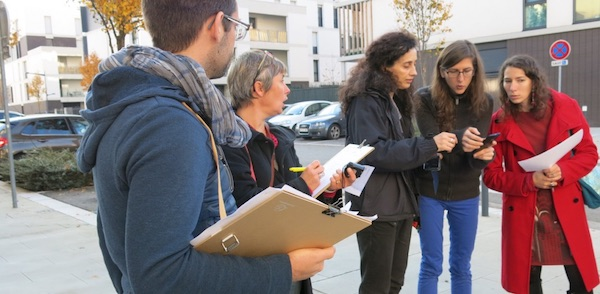"The digital transition of local authorities is entering a new phase in which internal transformation processes are accelerating (the Covid-19 health crisis has largely contributed to this movement). Faced with this evolution, local authorities must include and mobilize all their agents and be the bearers of a digital project for their territory. This course of action requires a leap forward in the professionalization of territorial agents. It also accentuates the risk of a gap between local authorities, depending on their level of maturity and their resources, with regard to a global project and a digital transition strategy.
The Centre National de la Fonction Publique Territoriale (CNFPT) has undertaken to understand what the impacts of the digital transition will be on the skills and training needs of territorial agents in 10 to 15 years. impacts of the digital transition on the evolution of territorial professions and on the skills and training needs of territorial agents. There are 1,965,300 local civil servants in 241 professions.
Référence :
This prospective study, conducted from October 2019 to February 2021, mobilized 159 local authorities, territorial establishments and some sixty organizations and institutions involved in the digital transition.
Among the main lessons learned, the CNFPT observes an acceleration of transformations as well as a profound but uneven transformation of territorial action. Local authorities are at different stages of development and the culture of their employees in terms of digital transition is disparate.
The study anticipates the changes that may take place in territorial professions. Despite the increase in the skill level of staff, the study highlights the need for more training to support local authorities.
How the digital transition is impacting territorial jobs
The study identified six main causes of short-, medium- and long-term impacts on territorial occupations:
- The use of new technologies (including artificial intelligence, connected objects, geolocation, embedded computing, BIM, drones, automation, robotization, remote monitoring and control, facial recognition, virtual reality, blockchain, cloud...)
- Regulatory obligations: open data, dematerialization, administration, data protection...
- The search for efficiencies and cost reductions;
- The intervention of digital service operators;
- The development of the relationship and digital uses in the direction of the users-citizens: e-services, communication, participation, Civic-Tech
- The deployment of new organizational methods: use of collaborative tools, telecommuting, monitoring tools, remote exchanges, etc.
205 trades impacted in the short term
The impacts of the digital transition are effective in the short term (0-5 years) for 205 trades out of 241 (85%).
Among them, three categories of jobs require, according to the CNFPT, special attention and support in the short term:
- 42 jobs considered " sensitive", i.e. strongly impacted by the digital transition and requiring a strong need for skills upgrading
- 20 professions with the highest number of employees (These 20 professions represent 1,090,000 employees out of a total of 1,965,300, i.e. 55% of the workforce)
- trades subject to a possible decline in the number of employees in the future (33 trades according to the study).
The impact of the digital transition on business
The digital transition impacts territorial professions by contributing to the "life cycle" of their activities: some of them are in decline, others are emerging, growing or transforming.
Activities that are disappearing or in decline
Between 20 and 22% of the trades in each category (all trades, "sensitive" trades, trades with a high number of employees) and 19 out of 27 occupational fields.
In descending order of importance, the disappearance or decline of activities applies to the following main activities: Emerging activities
- all "paper" activities and processes (archiving, mail, signature, notification, transmission-distribution, posting, delivery of paper documents, reprography, etc.);
- Routine administrative and management activities;
- general reception activities and, more generally, reception and physical permanence activities;
- manual and repetitive activities;
- some digital development activities (outsourced or now integrated by digital solution providers);
- the "physical" activities of control, maintenance and monitoring.
These activities concern between 23 and 30% of the trades in each category (all trades, "sensitive" trades, trades with a high number of employees) and 18 out of 27 occupational fields.
Emerging activities include The most significant impact of the digital transition on activities plays into the rise of some of them. It concerns between 33% and 39% of the trades in each category (all trades, "sensitive" trades, trades with the highest number of employees) and 14 out of 27 occupational fields.
- activities assisted by digital technology (steering, management, intervention...);
- data analysis;
- pooled assistance within service platforms;
- Activities that are growing (directly related to digital technology, data processing, internal and external digital mediation, etc.)
Activities that are changing
Activities undergoing transformation concern between 11 and 23% of the trades in each category (all trades, "sensitive" trades, trades with a high number of employees) and 14 out of 27 occupational fields.
The activities that are being transformed mainly concern:
- reception and, more generally, user relations, management and administration activities;
- activities whose purpose is centered on management with the progressive transformation of practices towards a less pyramidal management and more by projects and objectives;
- design and management activities, which will increasingly use expert systems to assist in strategy and decision-making.
- forecasting in connection with the use of predictive software and decisional information systems;
- tele-activities: reception, medical tele-consultation, remote teaching and animation activities, tele-monitoring;
- multi-channel relationship with users;
- Service design", which stems from the need to develop new services and user interfaces as a result of the digital transition.
- Data processing (acquisition, analysis, interpretation, AI, data consistency and reliability checks, security, exchanges);
- internal and external digital mediation;
- assistance and advice to users and services;
- communication on social networks;
- user consultation ;
- specialized reception ;
- monitoring (new tools, uses, risks, service providers, etc.);
- management dialogue between business units and with digital service operators.
A double movement
More globally, the study observes that the use of digital technology induces two opposing basic movements: In conclusion, the CNFPT formulates a series of recommendations for the short term (0-5 years) and the longer term (5-10 years).
- or the activities tend to become more versatile (e.g. communication officer, public relations officer)
- or conversely, they tend to specialize (e.g., CAD-BIM draftsman, geographic information systems project manager).





